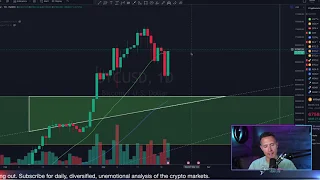Bitcoin’s rollercoaster ride continues! After a surge on dovish Fed comments, the price dipped with a surprise rate cut from Switzerland. Will the “much higher levels” predicted by analysts come true?
Bitcoin Retreats After Early Gains
Bitcoin (BTC) experienced a short-lived rally on Thursday, March 21st. The price initially climbed above $68,000, fueled by the Federal Reserve’s dovish stance on interest rates. However, the day ended with a 5% decline, bringing Bitcoin down to around $64,600. This pullback comes after a successful rebound from a Wednesday dip to $60,000.
Altcoins Outperform Bitcoin (for Now)
While Bitcoin struggled, certain altcoins defied the downward trend. XRP (Ripple), FIL (Filecoin), and ICP (Internet Computer) all saw gains of 6%-7% over the past 24 hours. Conversely, leading layer 1 network tokens like SOL (Solana), AVAX (Avalanche), and APT (Aptos) witnessed minor price drops.
The Dollar’s Strength: A Potential Culprit
Analysts suggest the US dollar’s resurgence might be behind Bitcoin’s price slump. This resurgence was triggered by the Swiss National Bank’s unexpected 25 basis point interest rate cut. A stronger dollar often translates to weaker performance for riskier assets like Bitcoin.
Musings of the Day, 3/21/24:
Despite JPOW’s Rhetorical Pivot, the data in coming weeks/months present a good likelihood that he punts again in June.
Perhaps USD resurgence today following surprise SNB cut is a hint that RoW will still Out-Dove the Fed. pic.twitter.com/uREhsB2jhL
— Michael Kao (@UrbanKaoboy) March 21, 2024
Analyst Predictions: Higher Levels Ahead?
Market analysis firm Swissblock believes Bitcoin has completed its correction phase, having reached their predicted target price range of $58,000-$59,000 last week. Analyst Henrik Zeberg predicts “much higher levels” for Bitcoin in the next uptrend phase. He also expects altcoins and Bitcoin mining firms to outperform in the coming period.
The Bottom Line: Holding $65,000 is Key
Crypto trader Jelle emphasizes the significance of the $65,000 price point. As long as Bitcoin holds this level, the correction might be over. However, a sustained rally would require a price breach above $69,000, the previous peak from the 2021 market cycle.
Disclaimer: This article is for informational purposes only and should not be considered financial advice.

